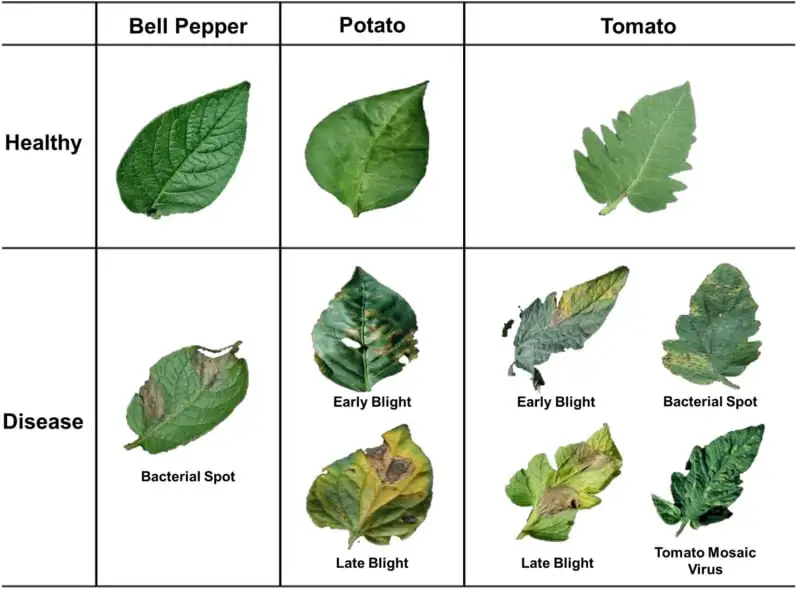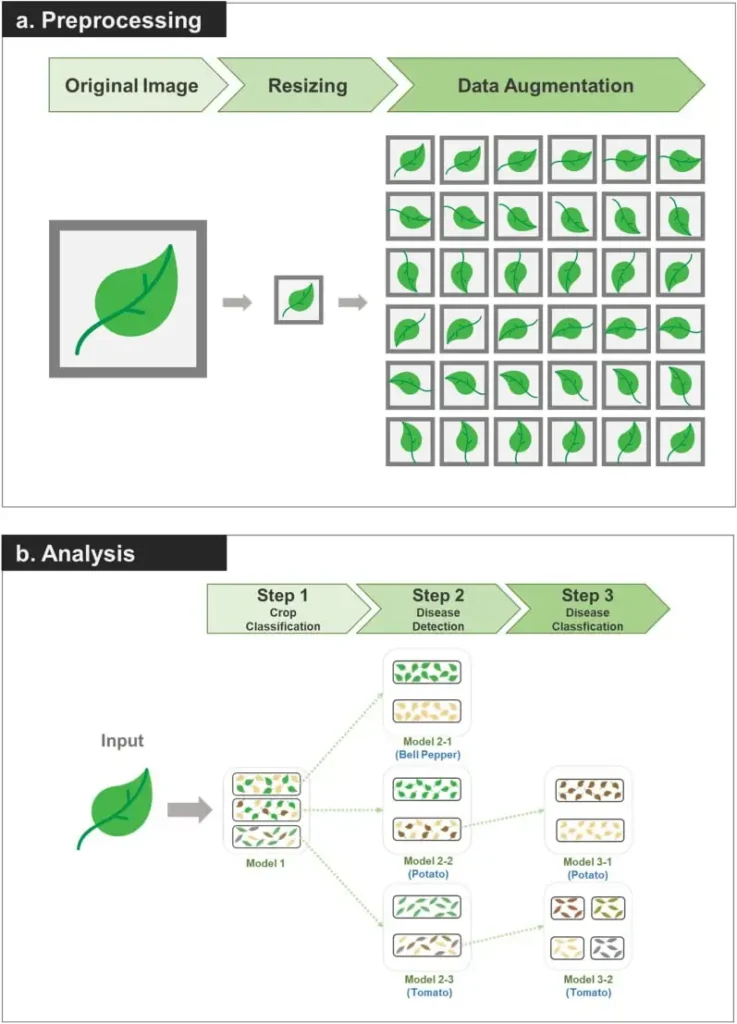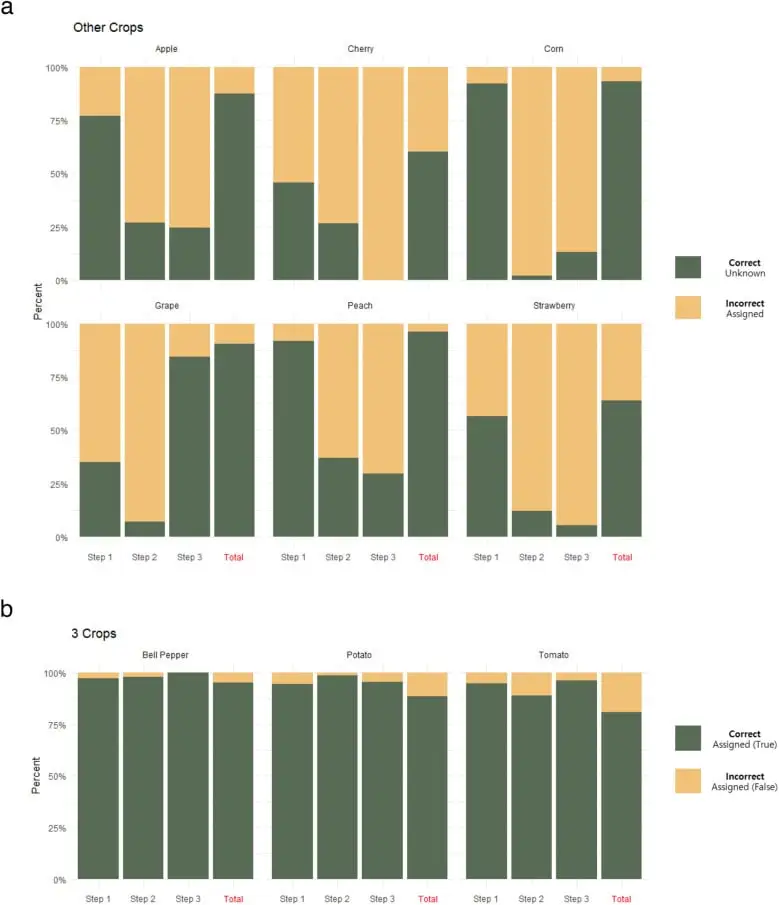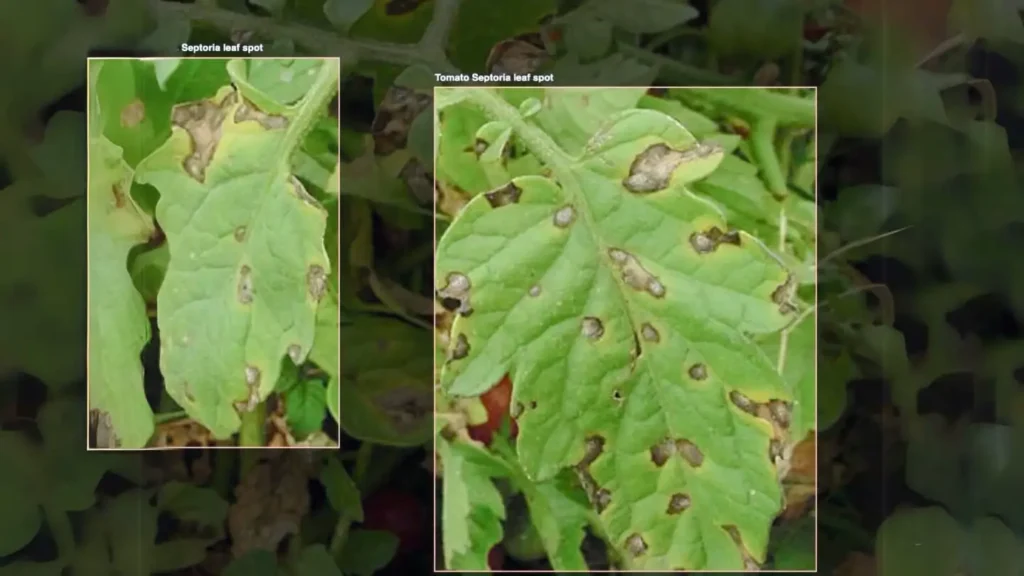Growing healthy plants is important for farmers to get good crops. But plants can get sick, and finding out what’s wrong can be hard.
Usually, experts have to check each plant, which takes a lot of time. Now, computers and artificial intelligence (AI) can help find plant diseases quickly and easily.
This guide will explain how we can use deep learning, a type of AI, to help farmers.
Why Do We Need Automated Disease Detection?
Checking plants for diseases by hand is slow and can have mistakes. AI can do this job faster and more accurately.
With AI, farmers can know early if their plants are sick, so they can fix the problem sooner. This helps them grow more and better crops.
Deep learning model for disease detection

Scientists made a special AI model to find plant diseases. Here’s how they did it:
Collecting and Preparing Data
- They used 24,101 pictures of healthy and sick plant leaves from a big online library called PlantVillage.
- The pictures were of nine different crops, including bell pepper, potato, and tomato.
- They made more copies of these pictures by rotating them to help the AI learn better. This technique is called data augmentation.
Model Structure
- They tested five different computer models (EfficientNet, GoogLeNet, VGG19, AlexNet, ResNet50) to see which one worked best.
- These models have layers that help them recognize patterns in pictures, like the different spots on sick leaves.
Three Steps to Detect Disease

(a) Phenotypic data preprocessing after resizing the original image data and data augmentation through rotation.
(b) Stepwise disease detection model of Solanaceae through a deep-learning algorithm.
(source)
- Step 1: Crop Classification
- The AI looks at the leaf picture and decides if it’s from a bell pepper, potato, or tomato plant. EfficientNet was the best at this, getting it right 99.33% of the time.
- Step 2: Disease Detection
- Next, the AI checks if the leaf is healthy or sick. Different models were best for different plants.
- For bell peppers, GoogLeNet was the best, with 100% accuracy.
- For potatoes, VGG19 was the best, also with 100% accuracy.
- For tomatoes, ResNet50 was the best, with 99.75% accuracy.
- Step 3: Disease Classification
- If the leaf is sick, the AI figures out what disease it has.
- For potatoes, EfficientNet could tell apart early blight and late blight with 99.40% accuracy.
- For tomatoes, EfficientNet could tell apart bacterial spot, early blight, late blight, and tomato mosaic virus with 97.09% accuracy.
Testing and Results

(b) Results for each step using the three crops that were used to build the model.
(source)
The scientists tested the AI with new pictures to make sure it worked well. They even tested it with pictures of plants not used in training the AI. The AI was good at recognizing when it didn’t know a plant, which helps avoid wrong answers.
- For example, when the AI saw pictures of apple leaves, it correctly identified them as “unknown” 76.92% of the time.
- The model also correctly identified non-model crops like corn (92.06%) and peach (91.66%).
The tests showed the AI is very accurate, with high precision, recall, and F1-scores. These scores measure how well the model identifies diseases without making mistakes.
Challenges and Future Work
The AI needs high-quality pictures to work best. Also, it should be trained with pictures of more kinds of plants and diseases. In the future, scientists will keep improving the AI and make tools that farmers can use easily.
For example:
- They plan to add more crops to the training dataset to improve the model’s accuracy.
- They are working on using field data, which means pictures taken directly from farms, to make the model more practical for real-world use.
Conclusion
The new AI model for finding plant diseases can help farmers take better care of their crops. By using this technology, farmers can spot problems early and grow healthier plants. As AI technology gets better, it will make farming easier and more efficient.
References
Jung, M., Song, J. S., Shin, A. Y., Choi, B., Go, S., Kwon, S. Y., Park, J., Park, S. G., & Kim, Y. M. (2023). Construction of deep learning-based disease detection model in plants. Scientific Reports, 13, Article number: 7331.
Not Sure How AI Can Help Your Business? Let’s Talk!

Ugnė Daniūnaitė
Business Development Manager
Book a no-obligation free consultation with our expert.



